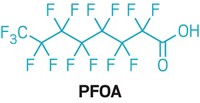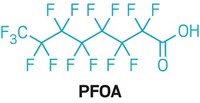Advertisement
Grab your lab coat. Let's get started
Welcome!
Welcome!
Create an account below to get 6 C&EN articles per month, receive newsletters and more - all free.
It seems this is your first time logging in online. Please enter the following information to continue.
As an ACS member you automatically get access to this site. All we need is few more details to create your reading experience.
Not you? Sign in with a different account.
Not you? Sign in with a different account.
ERROR 1
ERROR 1
ERROR 2
ERROR 2
ERROR 2
ERROR 2
ERROR 2
Password and Confirm password must match.
If you have an ACS member number, please enter it here so we can link this account to your membership. (optional)
ERROR 2
ACS values your privacy. By submitting your information, you are gaining access to C&EN and subscribing to our weekly newsletter. We use the information you provide to make your reading experience better, and we will never sell your data to third party members.
Persistent Pollutants
US EPA unrolls plan to address PFAS pollution
Agency seeks cleanups, polluter liability, and a national limit for PFOS and PFOA in drinking water
by Cheryl Hogue
February 14, 2019
| A version of this story appeared in
Volume 97, Issue 7

In a sweeping action plan, the US Environmental Protection Agency will take a multipronged approach to tackle pollution from a broad category of persistent and toxic synthetic compounds. The EPA unveiled its plan to address nonpolymeric per- and polyfluoroalkyl substances (PFAS) on Feb. 14.
It calls for cleanup of groundwater, a national drinking water limit for two widespread PFAS, more research, and possible industrial reporting on releases of at least some of these chemicals.
Two compounds are immediate targets in the action plan—perfluorooctanesulfonic acid (PFOS) and perfluorooctanoic acid (PFOA). These substances are no longer manufactured in the US but contaminate water supplies across the nation.
Under the plan, the agency intends to deem PFOS and PFOA as hazardous substances under the federal Superfund law for remediating hazardous waste. This designation will give communities, states, and water utilities the power to recover costs of cleaning up the chemicals from polluters. It spells out financial liability for businesses, including chemical manufacturers, and other entities that made or used PFOS and PFOA. Other entities include the US military, which used firefighting foams containing the substances at many bases.
The agency is also starting a process to set a maximum contaminant level for PFOS and PFOA in drinking water. That process will likely take years. By the end of 2019, the agency will make a legal determination, as required by the Safe Drinking Water Act, to lay the groundwork for setting the maximum contaminant level, acting EPA administrator Andrew Wheeler told reporters. Currently, the agency has just an advisory limit for PFOS and PFOA of 70 ppt individually or together.
In addition, the agency is weighing whether to add some as-yet-undecided PFAS to the nation’s Toxic Release Inventory. This would require companies that make or use the selected chemicals to report annual releases to air, water, or soil. Adding PFAS compounds to the inventory “could provide important information about where these chemicals are being released into the environment” and help identify communities that may have unknown PFAS pollution problems, says Ansje Miller, director of policy and partnerships at the Center for Environmental Health, an advocacy organization.
Some advocacy groups are worried EPA is moving too slowly. Miller points out that in the absence of EPA action, states are forging ahead with their own drinking water limits for PFOA, PFOS, and other PFAS.
The US chemical industry’s main lobbying arm, the American Chemistry Council, endorsed the agency’s plan. “EPA is best positioned to provide the public with a comprehensive strategy informed by a full understanding of the safety and benefits of different PFAS.” This, the group says, will ensure uniform national environmental standards and minimize the burden to states that are short on resources.





Join the conversation
Contact the reporter
Submit a Letter to the Editor for publication
Engage with us on Twitter